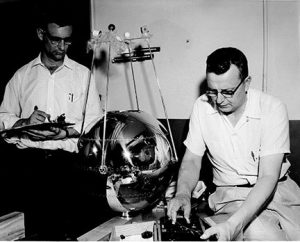Born in 1916, Winona State University alumnus Verner E. Suomi ’38 pioneered the field of satellite meteorology while maintaining a focus on teaching.
After earning his BS from Winona State Teacher’s College, Suomi taught physics at several Minnesota high schools. Upon the outset of World War II, Suomi made inroads into the emerging science of meteorology, eventually joining the new Department of Meteorology at the University of Wisconsin-Madison in 1948 and completing a PhD at the University of Chicago in 1953.
For the next several decades, he operated at the center of rapidly developing satellite technologies. Suomi’s most important and lasting invention was his 1963 spin-scan camera, which hovered 22,000 miles above the Equator, taking photographs and data readings allowing for continuous tracking of weather systems. These images are still used by meteorologists today.
Suomi went on to develop a number of weather-tracking satellites, building the foundation for current tropical storm prediction. As space exploration exploded in the 1970s, Suomi participated in atmospheric studies of Venus, Jupiter, Saturn, and Uranus.
After his death in 1995, colleagues remembered Suomi as, first and foremost, a generous teacher who paid an undergraduate’s tuition and shared his work with students, farmers, and researchers outside of the department. In 2011, NASA honored Suomi’s “simple and elegant” achievements by launching the Suomi NPP Satellite, famous for taking the “Blue Marble” image of Earth.
Suomi himself noted that, throughout his long and illustrious career, he most valued being able to “dabble around in the wonders of creation.”


